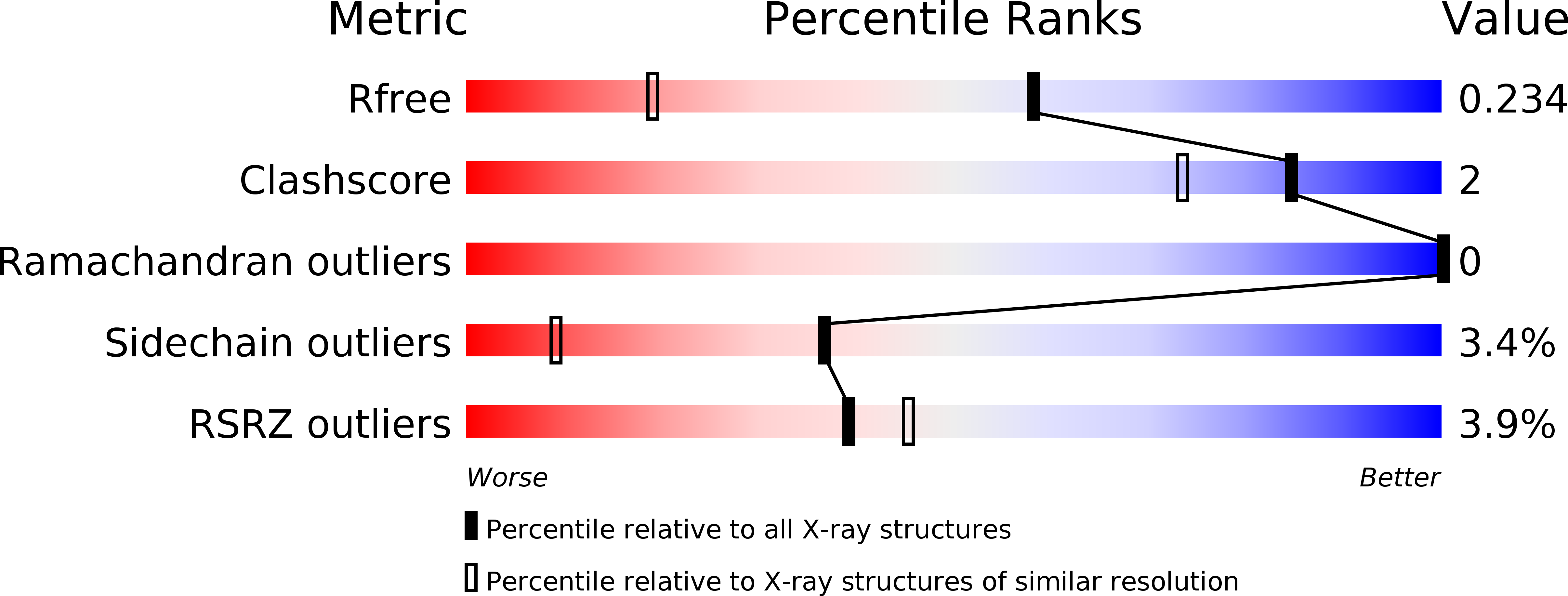
Deposition Date
2018-08-19
Release Date
2018-11-14
Last Version Date
2024-11-13
Entry Detail
PDB ID:
6HDT
Keywords:
Title:
crystal structure of short afifavidin - biotin complex
Biological Source:
Source Organism:
Afifella pfennigii (Taxon ID: 209897)
Host Organism:
Method Details:
Experimental Method:
Resolution:
1.54 Å
R-Value Free:
0.22
R-Value Work:
0.16
R-Value Observed:
0.16
Space Group:
P 1 21 1


